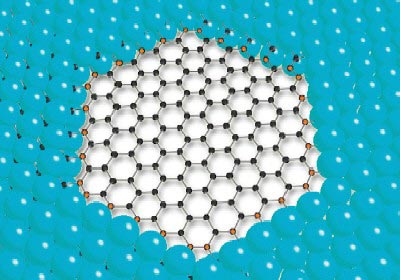In the vast universe of condensed matter physics, quantum dots emerge as exquisite nanostructures, emanating a peculiar charm that transcends their diminutive size. These semiconductor particles, typically comprising a few dozen to several thousand atoms, can confine electrons in three dimensions, creating a palette of colors that, much like an artist’s brush upon canvas, can illuminate and transform electronic devices. In this discourse, we shall explore the captivating world of quantum dots, examining their unique properties, fabrication techniques, and myriad applications in modern technology.
To grasp the significance of quantum dots, one must first delve into the heart of their intrinsic characteristics. Quantum confinement is the cornerstone of their appeal. When reduced to nanoscale dimensions, the electronic properties of materials undergo a metamorphosis. Electrons and holes, which represent the absence of electrons in a semiconductor, are sequestered within these tiny domains, resulting in discrete energy levels. This phenomenon mirrors the behavior of atoms, thereby granting quantum dots their nomenclature. As a result of quantum confinement, a quantum dot can emit light at varying wavelengths depending on its size; smaller dots emit shorter wavelengths, often in the ultraviolet or blue spectrum, while larger counterparts yield reds and greens. This tunability offers a plethora of possibilities for device decoration and applications.
A pivotal aspect of quantum dots is their unique photoluminescence. When excited by an external light source, these minuscule spheres radiate photons, engendering a vibrant display of colors. This visual capability not only captures the imagination but also lends itself to practical applications. One realm where quantum dots have made significant inroads is in display technology. Quantum dot light-emitting diodes (QD-LEDs) represent a fusion of dazzling aesthetics and enhanced energy efficiency. As they skew traditional display paradigms, QD-LEDs can deliver a wider color gamut compared to conventional liquid crystal displays (LCDs) or organic light-emitting diodes (OLEDs), elevating the visual experience for consumers.
The process of fabricating these alluring nanostructures is equally as fascinating as their properties. Chemical methods, such as colloidal synthesis, have become the bedrock of quantum dot production. In this paradigm, precursors are subjected to high temperatures within a solvent, allowing for controlled nucleation and growth of the quantum dots. This finesse enables the reproducibility of quantum dots with precise size control and uniformity in shape. Each synthesis method imparts distinct properties to the resultant dots; therefore, the choice of synthesis influences their subsequent applications and effectiveness in various devices.
Additionally, the incorporation of quantum dots into solar cell technology exemplifies their potential to revolutionize energy harvesting. Conventional photovoltaic cells predominantly utilize silicon, which possesses inherent limitations in efficiency. However, the integration of quantum dots into solar cells can augment light absorption across a broader spectrum. This advancement holds the promise of significantly enhancing the efficiency of solar energy conversion, heralding a new era in sustainable energy solutions. By judiciously designing semiconductor heterostructures, researchers are now exploring tandem solar cells utilizing quantum dots, where layers of varying bandgap energies capture different portions of the solar spectrum.
In the realm of biomedical applications, quantum dots unfold yet another facet of their multifarious nature. Their ability to be engineered for specific cellular targets opens the door to revolutionary advances in medical imaging and drug delivery. Functionalization of quantum dots with biomolecules, such as antibodies or peptides, allows for targeted imaging of specific cells or tissues, ensuring that diagnostic procedures are more accurate and precise. Furthermore, their photostability and brightness surpass that of traditional fluorophores, making them invaluable tools for researchers in cellular biology.
As captivating as these applications may be, the sustainability of quantum dot technology invites scrutiny. The materials that constitute quantum dots—often referred to as heavy metals, such as cadmium or lead—pose environmental and health concerns. Efforts are underway to address these challenges through the development of colloidal quantum dots that are based on non-toxic alternatives, thus ensuring that future applications do not come at the expense of ecological integrity.
The convergence of nanotechnology and quantum mechanics in quantum dots symbolizes the relentless march of scientific progress. As researchers delve deeper into the quantum realm, an odyssey of discovery continues to unfold. From enhancing the visual displays on our devices to revolutionizing energy capture and advancing medical diagnostics, quantum dots encapsulate the quintessence of innovation.
Ultimately, the liberal sprinkling of quantum dots in various devices exemplifies the intersection of art and science. Much like a master painter delicately applies colors to evoke emotion, quantum dots breathe life into devices through their vibrant emissions and extensive functionalities. Their unique appeal is not merely in their optical prowess, but also in their vast potential to create technologies that align more closely with nature, fostering a future that harmonizes human needs with the rhythms of the natural world.












